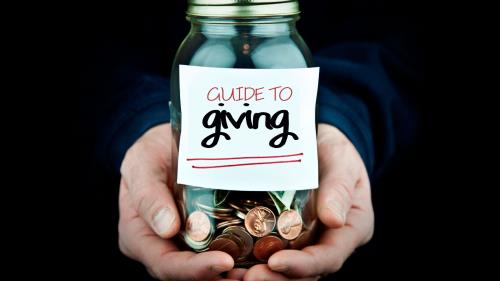-
Financial Freedom Workshop - Session 3
Contributed by Aaron Mishoe on Nov 28, 2017 (message contributor)
Summary: Learn the Biblical way to build your avings and live debt free.
Download the free PowerPoint and teaching maerials at:
www.LisbonWC.org/free.htm
Welcome!
FINANCIAL FREEDOM WORKSHOP
Session 3
Developed using the books
Your Money Map: A Proven 7 Step Guide to True Financial Freedom
and The Total Money Makeover
ASSIGNMENT FROM LAST WEEK
- Finish working on your budget listing all your expenses that you can.
- Review your credit report.
THE ROAD TO FINACIAL FREEDOM
MONEY MAP
Destination #1
- Begin using a spending plan
- Save $1,000 for emergencies
Destination #2
- Pay off credit cards
- Increase savings to one month’s living expenses
ROAD TO FINACIAL FREEDOM
Destination #3
Pay off all consumer debt
Increase savings to three month’s living expenses.
- “49% of Americans could cover less than one month’s expenses if they lost their income” (Ramsey).
- Due to the unemployment and underemployment rate in this area, I would recommend six months savings.
- How much savings do you need? One question you can ask yourself, “How long will it take me to find another job if I am laid off?”
- You will have to live off your savings until you find another job. The more savings you have, the more flexibility it gives you in looking for just the right job for you.
Romans 13:8
“Keep out of debt and owe no man anything.”
WHICH DO I DO FIRST?
Work on your consumer debt and savings at the same time.
- Consumer debt is all debt other than credit cards, your home mortgage, and business loans.
- The three most common consumer debts are auto debt, student loans, and home equity loans.
- Take the amount you were spending on paying off credit cards and increasing your savings from the last destination.
- Divide it in two. Pay half to savings and half to your consumer debt.
When you meet one of the goals, put that money toward the other goal.
- Just like in the last destination.
- If you meet your savings goal first, put all the money toward paying off consumer debt.
- If you pay off consumer debt first, put all the money toward meeting three months savings.
How? Snowball the debt like the credit cards.
- Continue making minimum payments on all your consumer debts.
- Focus on acceleration the payment of your smallest higher-interest consumer debt first.
- When you pay that one off, apply that payment toward the next smallest one, and so on.
AUTO DEBT
A debt free strategy
- Unlike a home, a car depreciates in value as soon as you drive it off the lot.
- It is worth less than you paid for it.
- The average car payment in America today is $484 over 84 months (Dave Ramsey Radio)
- Four steps to get out of auto debt:
~ Decide to keep your car at least three years longer than your car loan.
~ Pay off your car loan.
~ After your last payment, keep making the payment, but pay it to yourself. Put it into an account that you will use to buy your next car.
~ Use your car’s trade-in value and the money you’ve saved to pay for your next car.
- What if you need another car now but have not saved up?
~ Decide how much you can afford to pay on a car.
~ Buy a $1000 beater and drive it for six months.
~ Save up what you would have paid in payments (let’s say $300 per month).
~ In six months, sell the car (for probably what you paid for it) and add what you saved to buy a better car for $2,800 ($1,000 + $1,800).
~ Save up for another six months, sell the car, and buy another one for $4,600 ($2,800 + $1,800).
~ In another year, sell the car, and buy a car for $8,200 ($4,600 + $3,600).
~ Do this until you have the car you need.
~ Now start setting those same payments aside until you have enough saved up for you next car.
Buy used cars
- Cars experience the worst depreciation in the first two years.
- Cars lose around 35% of their value in the first year alone.
- Buying a newer low-mileage used car is a better value.
- Most people use the cost of car repairs as a reason to buy a new car.
- Compare what an expensive car repair would be to a year of car payments.
- The repair is typically cheaper.
- The most economical car is usually the one you already own” - Larry Burkett
- Don’t be too proud to drive an older car.
Leasing isn’t the solution
- Monthly lease payments are often lower than a car loan.
- It may seem like you’re paying less, you’re not!
- You will get stuck at the end of the lease.

 Sermon Central
Sermon Central



